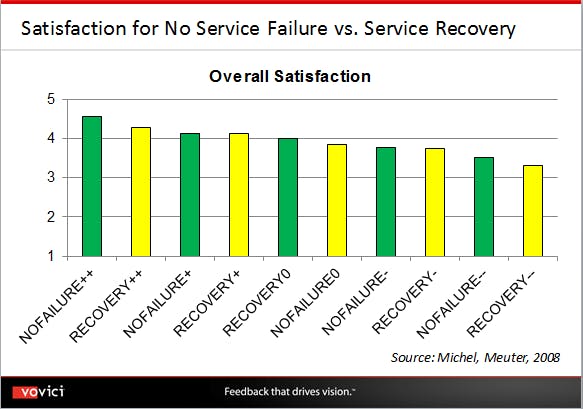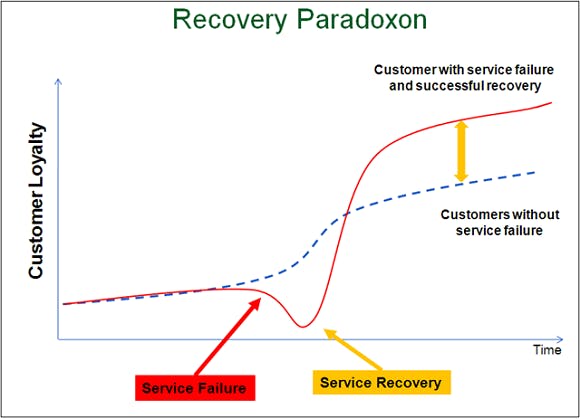“Now that we’ve addressed their issue, the customer actually seems happier with us than they have ever been before.”
“Yeah, maybe we should break things for every customer and then fix them to boost customer satisfaction!”
I’ve heard variations of the above conversation, always tongue in cheek, many times over the years. The executives discussing the situation have observed a customer who experienced the service recovery paradox: the paradox is when the problems of a particular customer are addressed so well in service recovery that the customer is more satisfied afterwards than they had been before any problems occurred.
More than once this paradox has led to the sardonic observation that all an organization has to do to improve customer satisfaction is to purposely mess up an interaction with every customer and then clean up each mess.
While the service recovery paradox does indeed sometimes happen for individual customers, it is much less common than generally assumed by service managers. In their paper “The Service Recovery Paradox: True But Overrated?”, Stefan Michel and Matthew L. Meuter conducted one of the first empirical studies to quantify the frequency of the service recovery paradox. The authors segmented retail banking customers into ten groups: NOFAILURE++ (customers who didn’t experience a service failure and who rated the initial service interaction the highest) through NOFAILURE– (no service failure but the lowest rated initial service interaction) and RECOVERY++ (customers who experienced a service recovery and rated it the highest) through RECOVERY– (a service recovery that was rated the lowest). They consistently found that overall satisfaction was higher for the NOFAILURE group – the recovery paradox is only observed when the initial service was not rated as highly as the subsequent recovery was rated. The service recovery paradox is rarely seen: so rarely seen, in fact, that half the studies the authors reviewed denied the existence of the recovery paradox.

As the authors conclude:
Verifying a service recovery paradox does not suggest that ineffective service followed by an outstanding service recovery is a viable strategy.
- Recovery efforts that are perceived as very satisfying are expensive and difficult to manage.
- It may be the uniqueness of a recovery that creates the “wow” effect. Customer delight is achieved “from having one’s expectations exceeded to a surprising degree” (Rust and Oliver, 2000, p. 86). Consequently, standardized recoveries can never create this uniqueness and surprise.
- It is very difficult to create a culture of lax initial service delivery in which failures are accepted and yet develop a culture of fantastic service recovery efforts.
Thus, a service recovery strategic focus should be both active, in the sense that employees aggressively implement service recovery efforts immediately, and passive, in the sense that service recovery opportunities should not be planned.
When it occurs, the service recovery paradox should be appreciated as a bonus. Its possibility offers the potential for redemption with an individual customer.


